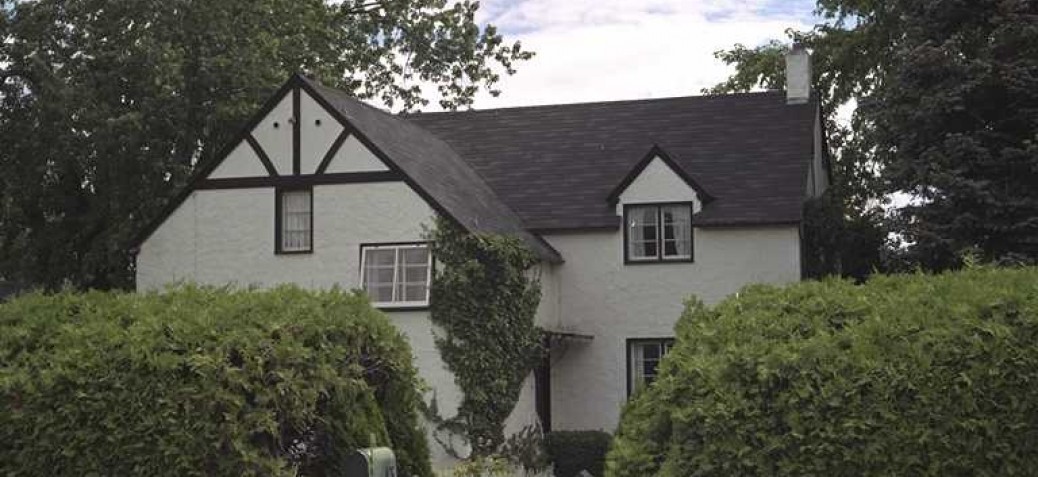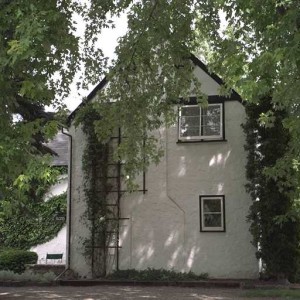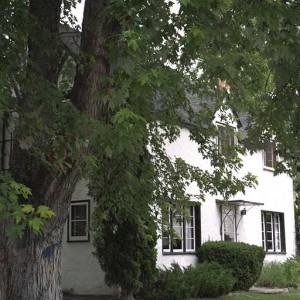Barton House
Place Description
The Barton House is a one and one-half storey transitional Period Revival house, with stucco cladding and half-timbering, located on a corner lot on Cadder Avenue at Long Street, surrounded by a large cedar hedge. It is located in Kelowna's historic Abbott Street neighbourhood and is similar to others in the area in size, though older and larger than its immediate neighbours.
Heritage Value
Built in 1938, this residence is a sophisticated example of a late Period Revival house, marking the transition from the use of traditional architectural features towards a pure modern expression. At the time, it was still considered good taste for a house to have an identifiable architectural style, here most obviously Tudor Revival, but this was also the period of demand for modern amenities and houses based on the rational precepts of domestic science. This residence represents the waning use of architectural historicism in the face of the rising popularity of modernism, and the trend to eliminate extraneous ornamentation.
Additionally, the heritage value of this residence is associated with its first residents, Eric Barton and his wife Margaret E.R. Barton. Eric Walter Barton (1883-1961) was an active member of Kelowna's business community and contributed to the development of community associations and the city's public schools. He was Secretary of the Board of Trade, Manager of Creditors' Protective Service in the 1930s, Secretary of the Kelowna Ration Board and Secretary-Treasury of School District No. 23.
Character Defining Elements
Key elements that define the heritage character of the Barton House include its:
- corner location on a large, landscaped property at Long Street and Cadder Avenue;
- residential form, scale and massing as expressed by its one and one-half storey height and 'L' shaped plan;
- side-gabled roof with lower front-gabled roof and gable wall dormers, all with clipped eaves;
- concrete foundation and wood-frame construction;
- Period Revival details such as its textured stucco exterior and half-timbering in the upper gable ends;
- additional exterior details such as its original glazed wooden front door and exterior stucco chimney; and
- irregular and asymmetrical fenestration with multi-paned casement windows with horizontal muntins, diamond-pane leaded windows and stained glass leaded windows.






